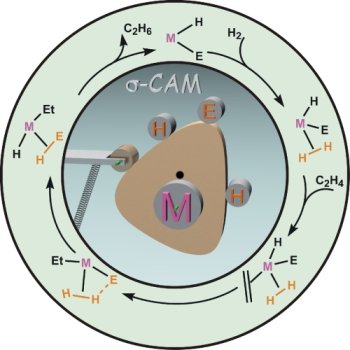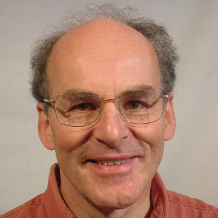Professor Robin Perutz, FRS
01904 322549
E-mail: robin.perutz@york.ac.uk
Organometallic Photochemistry, Small Molecule Activation, Catalysis and Solar Fuels
Much of our research is concerned with homogeneous catalysis by transition metal complexes and the mechanisms that underlie it. Homogeneous catalysis has innumerable applications for synthesis of bulk chemicals on an industrial scale and for synthesis in the laboratory. Sometimes we probe active catalysts themselves, but often we probe individual steps in catalytic cycles through the use of dissociative photochemistry. Another recurring them of the research is small molecule activation: H-H, H-C, H-B, H-Si and especially C-F bonds are targets of interest. Supramolecular photochemistry targets the application of excited states of transition metal complexes for application in fluorescence sensing and in mimicking biological photosynthetic pathways. Often, electron transfer or charge separation follows on rapidly from light absorption. This photochemistry has great potential in the conversion of solar energy to chemical energy, also known as solar fuels. We belong to a research consortium called Solarcap that targets alkane oxidation and carbon dioxide reduction via solar cell. Our methodology ranges from conventional synthesis to laser spectroscopy, including NMR spectroscopy with laser photolysis within the probe and time-resolved spectroscopy on nanosecond and picosecond timescales. The group has very active links with computational chemists who help us study our reactions by quantum chemical methods. The research group is very international; we also have links to several other research groups in the UK and in other European countries.
- Dissociative Photochemistry
- Solar Fuels by Means of Photo-induced Electron Transfer in Supramolecular Metal Complexes
- CF Bond Activation and Metal Fluoride Complexes
- Catalysis and Catalytic Mechanisms
- Methodology
- Profile


